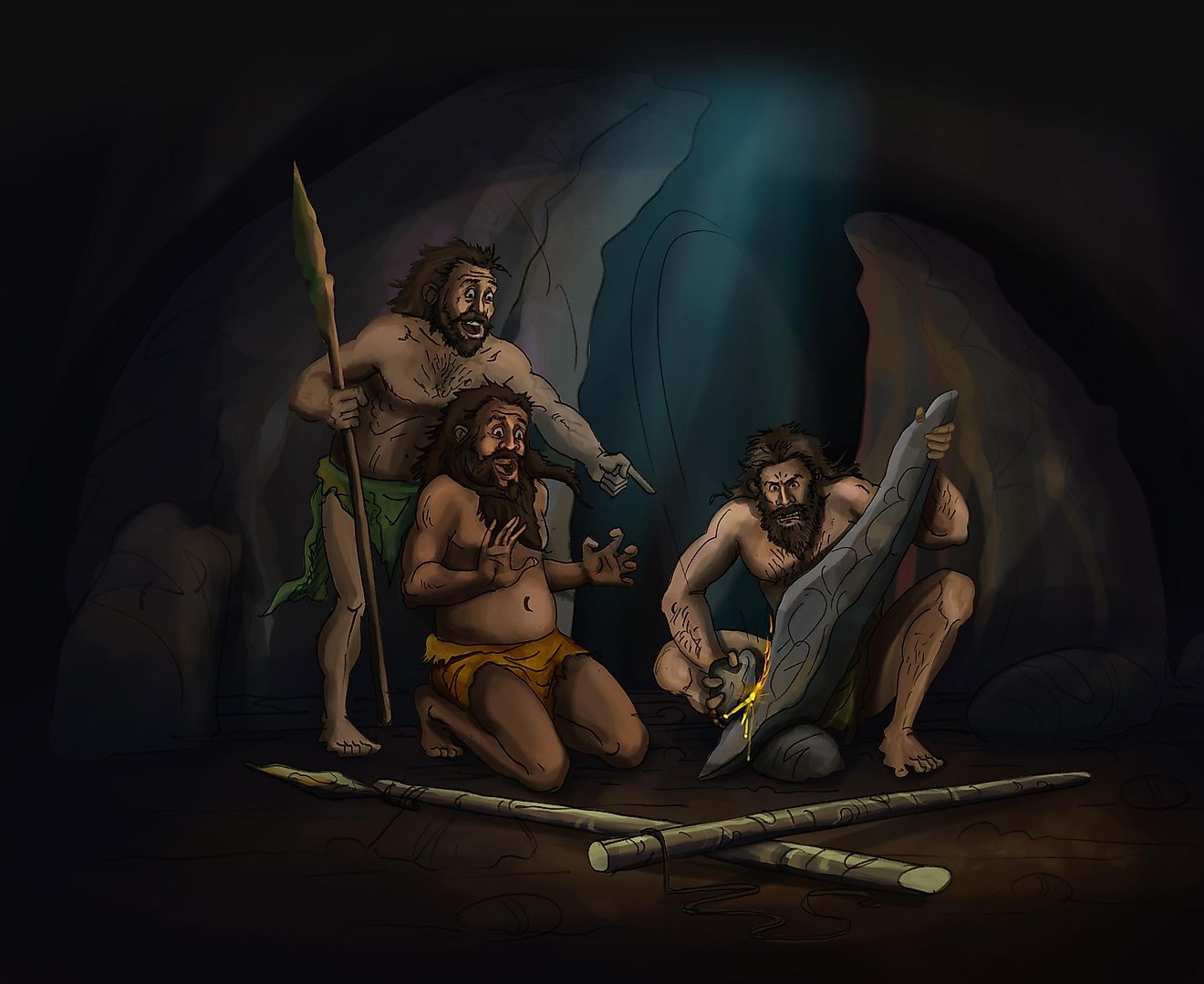
- Although we cannot know for sure when the first successful fire was built, scientists study fossil records for traces of charcoal.
- It is believed that the earliest versions of the wheel were potter’s wheels, used around 3500 BC in Mesopotamia.
- Stone tools seem to have developed approximately 2.6 million years ago, during the Early Stone Age.
1. Fire
Although we cannot know for sure when the first successful fire was built, scientists studying fossil records found evidence of it in the late Silurian Period dating back to 420 million years ago. Experts believe humans, who didn’t appear until much later, discovered it 120,000 to 700,000 years ago. Tools from that period were found at different archaeological sites that required glue that could not have been made without fire.
2. The Wheel

The origin of the wheel is also hard to pinpoint, but it is theorized that the earliest versions were potter’s wheels, used around 3500 BC in Mesopotamia. Wheels were also used on prehistoric vehicles like chariots, and in pulley systems. Ancient civilizations used them in the Middle East, Eurasia, and other parts of the world; it is believed that the first wheelbarrows were used between 600 to 400 BC in ancient Greece.
3. Tools
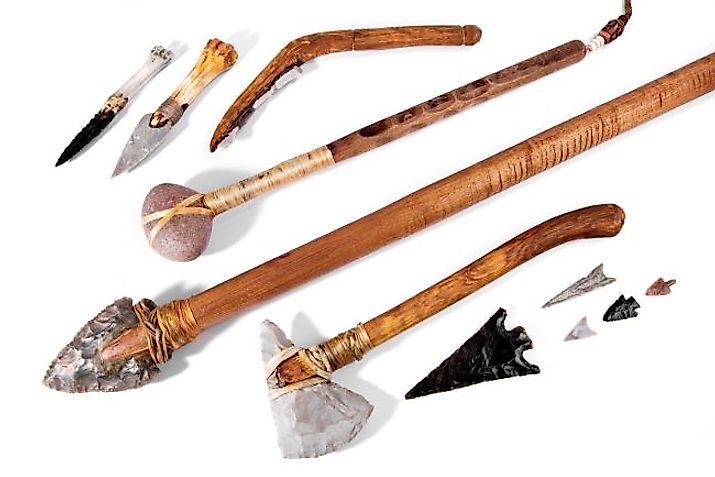
Stone tools seem to have developed approximately 2.6 million years ago, during the prehistoric Early Stone Age. These basic implements were discovered in Tanzania back in the 1930s and included sharp stone flakes, stone cores, and hammerstones. In time the tools became more refined and evolved into ancient cutting tools and hand axes.
4. Paper
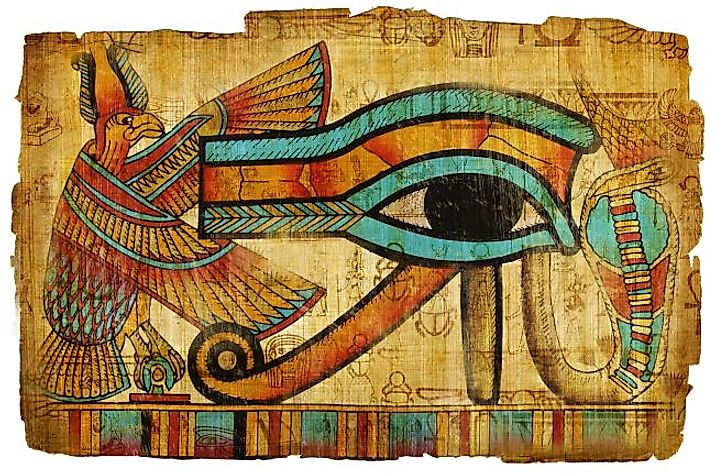
Papyrus, from which the word paper derives, originated in ancient Egypt as early as 3,000 BC and was made of papyrus plants, which grew by the Nile River. Ancient Egyptians also fashioned the earliest pens out of cut reeds, and ink out of a combination of beeswax, soot, and vegetable gum.
5. Clocks
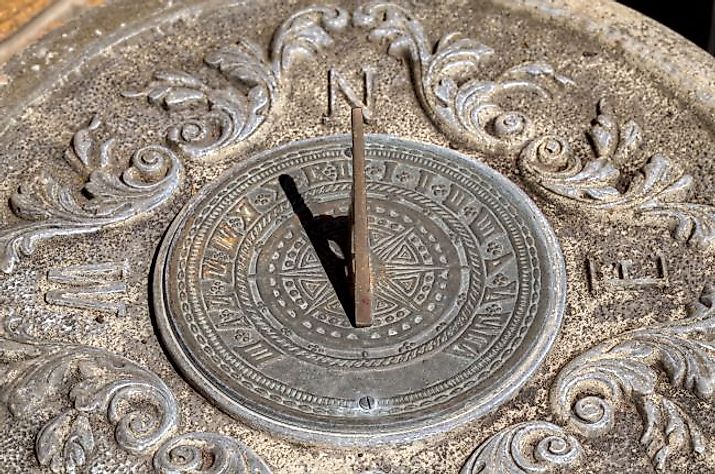
Before mechanical clocks appeared in Europe during the 14th century, the measuring of time was done by sundials. As early as 1, 500 BC, the Ancient Egyptians divided the day into smaller parts using a flattened piece of limestone and a small pillar. The use of the water clock was also frequent, with the earliest recorded water clock believed to be from the tomb of pharaoh Amenhotep I. The invention of the mechanical clock is credited to Chinese mathematician, Yi Xing, in 725AD.
6. Concrete

The earliest recorded use of cement dates back to the ancient traders of Syria and Jordan region around 6, 500 BC. A form of cement was also used to build the Great Wall of China as well as parts of the Great Pyramids of Giza. Some 2, 100 years ago, the Ancient Romans mixed volcanic ash and limestone into volcanic rock or brick and built entire cities.
7. Coffee

The history of coffee is shrouded in mystery, with one particularly popular legend crediting a goat herder named Kaldi for its discovery. It is said that Kaldi was in the coffee forests of the Ethiopian plateau when he noticed that his goats became very energetic after eating berries from a particular tree. Kaldi recounted how the goats could not sleep at night after eating the fruits to the abbot of the local monastery. The latter made a drink from the berries and experienced a similar experience. He shared it with the other monks and the secret of the energizing berries spread. Eventually, the word reached the Arabic Peninsula where modern coffee roasting methods originated in the 13th century.
8. Clothing
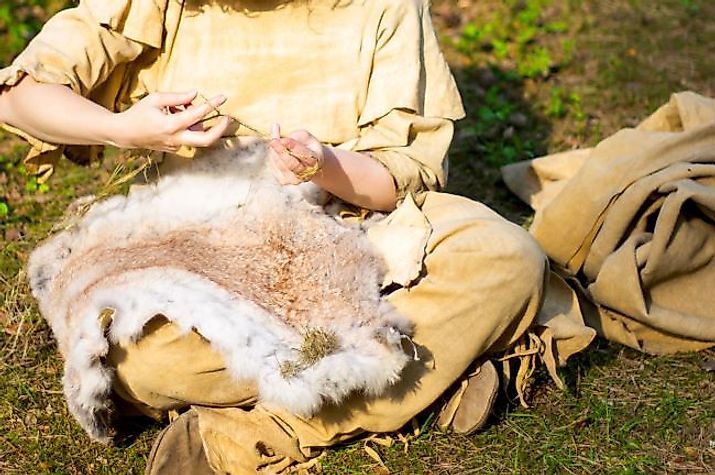
Genetic analysis indicates that humans may have worn the first clothing around 170,000 years ago. Ancient sewing needles from about 15,000 to 60,000 years ago were also found in Siberia, South Africa, France, Spain, China, and Russia, possibly used to sew animal skins together.
9. Calendars
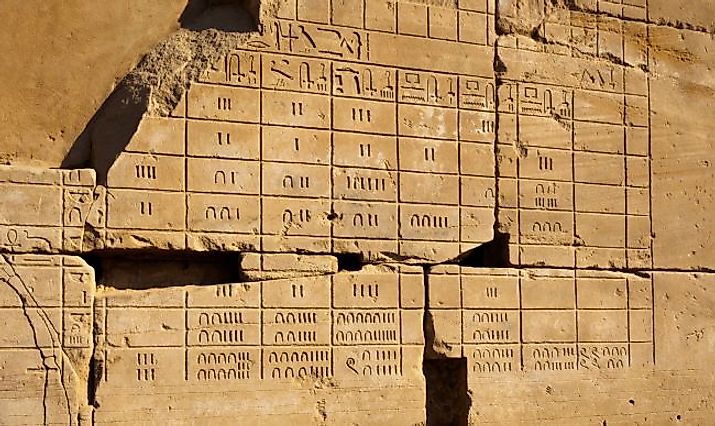
The invention of the 365-day calendar dates back to Ancient Egyptians who first created the lunar calendar, followed by the solar calendar and finally the civil calendar. The latter consisted of 12 months, each 30 days long, and an additional five epagomenal days (to account for the difference with the astronomical year). In 1582, Pope Gregory XIII introduced the Gregorian calendar, which we still use today.
10. Chocolate
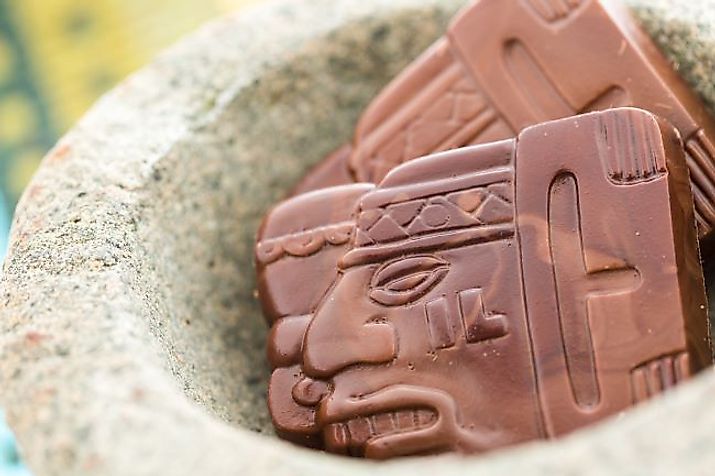
Chocolate comes from cacao tree beans, which were cultivated by the ancient Mayans, Aztecs, and Toltecs in what is formerly known as Mesoamerica. The ancients revered it as a gift from the Gods and used it in celebrations and as currency. There are different accounts of when chocolate arrived in Europe, however by the 1500s it was a favorite indulgence of the Spanish court.


 Users Today : 557
Users Today : 557 Total views : 469700
Total views : 469700